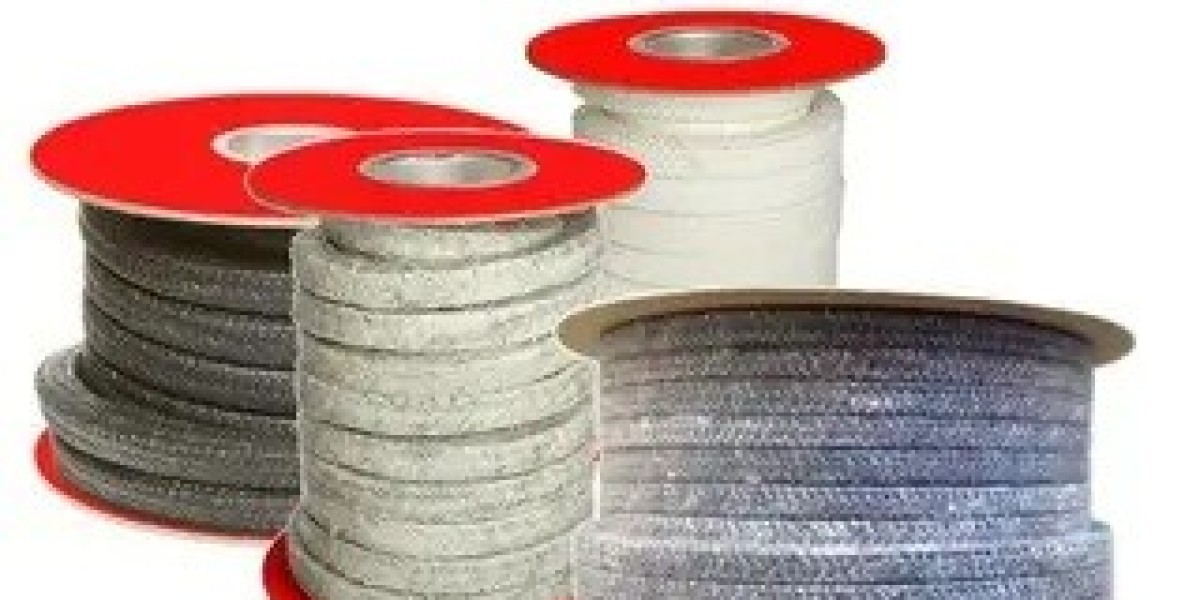Packing Seals in Industrial Applications: Principles, Materials, and Selection Guide
In the industrial field—whether in large-scale chemical equipment or precision mechanical devices—sealing performance is critical for ensuring normal operation and preventing leakage. Packing seals, as essential components of sealing technology, silently protect equipment with their unique principles and diverse material properties. This article explores the working mechanism, material characteristics, structures, and selection strategies of packing seals to provide a comprehensive understanding of this vital technology.
Sealing Principle of Packing Seals
Packing seals rely primarily on two complementary effects: the labyrinth effect and the bearing effect, which work together to prevent leakage effectively.
Labyrinth Effect
At the microscopic level, shaft surfaces are uneven, forming tiny gaps when in contact with the packing. These gaps create a complex labyrinth. Pressurized media moving through this labyrinth are repeatedly throttled, reducing pressure at each stage and preventing leakage. The labyrinth effect essentially forces the medium to “lose its way,” achieving effective sealing.Bearing Effect
A thin liquid film exists between the packing and the shaft, allowing relative motion to resemble a sliding bearing. This reduces friction, minimizes wear, and prolongs the packing’s service life. The bearing effect ensures smooth sliding between packing and shaft while maintaining a tight seal.
Material Characteristics of Packing Seals
Packing seals operate under demanding conditions, such as high temperature, pressure, corrosive media, and varying shaft motion. To meet these challenges, packing materials must possess the following key properties:
Elastic-Plasticity – Enables packing to flexibly adapt to vibrations, eccentricities, or gaps through elastic deformation while achieving better long-term conformity via plastic deformation.
Chemical Stability – Prevents chemical reactions with acidic, alkaline, or neutral media, ensuring consistent sealing performance in harsh chemical environments.
Impermeability – Blocks media penetration through microscopic channels, even under high pressure and temperature, ensuring zero leakage.
Self-Lubrication – Reduces friction and wear between packing and shaft without external lubricants, extending equipment life and improving efficiency.
Temperature Resistance – Maintains material stability under high operational or media temperatures, preventing degradation or deformation.
Practicality – Easy installation and removal, simple manufacturing, and cost-effectiveness enhance usability and reduce maintenance costs.
Braiding Structures of Packing Seals
Braiding structures influence the sealing performance and lifespan of packing seals. Common forms include:
Braid-Over-Braid – Looser structure, compensates for vibration and eccentricity; suitable for small cross-sections but may be less durable for larger sizes.
Multi-Layer Braid – Dense structure with multiple layers; strong sealing for static or low-speed equipment but may delaminate under high stress.
Core-Inserted Braid – Incorporates a rubber or metal core wrapped in fiber layers; excellent strength and flexibility, ideal for pumps and valves.
Interlock Braid – Advanced design with smooth surface, high elasticity, wear resistance, and compactness; provides uniform contact and superior sealing for modern applications.
Types of Packing Seals
Packing seals are classified based on base material:
Natural Fiber Packing – Cotton, hemp, wool; suitable for low-temperature, non-corrosive media.
Mineral Fiber Packing – Asbestos; high temperature and chemical stability but restricted due to health concerns.
Synthetic Fiber Packing – Graphite, carbon fiber, PTFE, Kevlar, acrylic-silicone; excellent overall properties for high temperature, high pressure, and corrosive media.
Ceramic and Metal Fiber Packing – Silicon carbide, boron carbide, alkali-resistant glass fiber; extremely high temperature and corrosion resistance for specialized applications.
Key Performance Indicators
When evaluating packing seals, consider:
Compression Ratio – Ability to deform and conform to the shaft for effective sealing.
Rebound Ratio – Ability to restore shape after stress, ensuring dynamic sealing.
Wear Resistance – Minimizes material loss and prolongs service life.
Self-Lubrication – Reduces friction and energy consumption.
Stress Relaxation Rate – Low relaxation ensures long-term compression and sealing.
Thermal Loss – Stability under high temperature.
Acid/Alkali Loss – Resistance to chemical corrosion.
Selection of Packing Seals
Selecting the right packing seal depends on operational conditions:
High temperature, high pressure, corrosive media: Graphite or PTFE with through-core braiding.
High speed and pressure: Carbon fiber packing with appropriate braiding.
General conditions: Natural or synthetic fiber packing; focus on wear resistance and self-lubrication.
Proper selection balances material properties, braiding form, and performance indicators to ensure optimal sealing performance and equipment reliability.
Conclusion
Though small, packing seals play a vital role in industrial equipment, safeguarding operational stability. Understanding their sealing principles, material properties, braiding structures, types, and performance metrics enables engineers to select the most suitable seals, improve equipment reliability, reduce leakage risk, and extend maintenance intervals. Packing seals, with their versatility and robustness, remain indispensable in modern industrial sealing applications.
It's important to know about Google SEO to help your website rank higher in search results.






